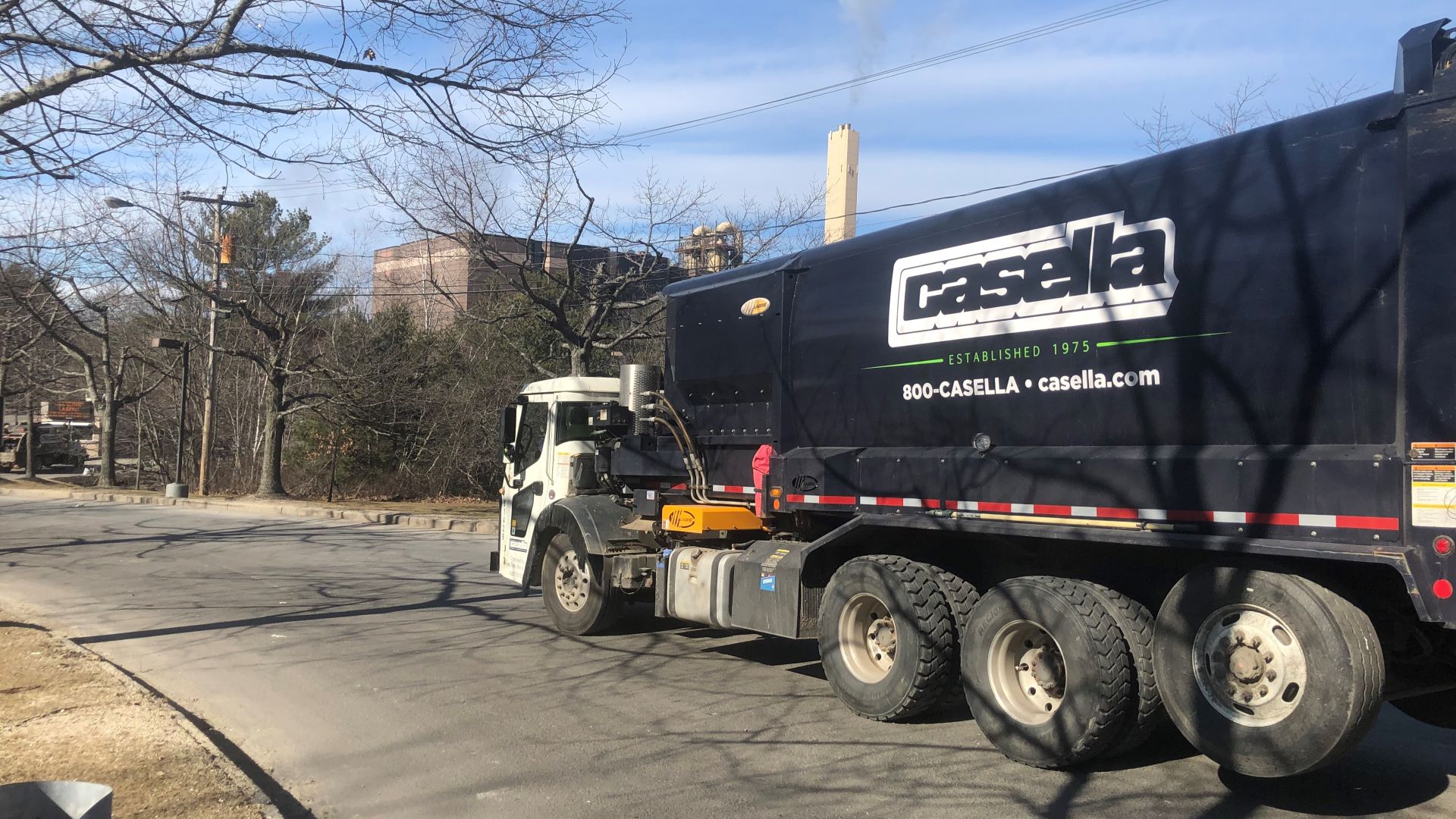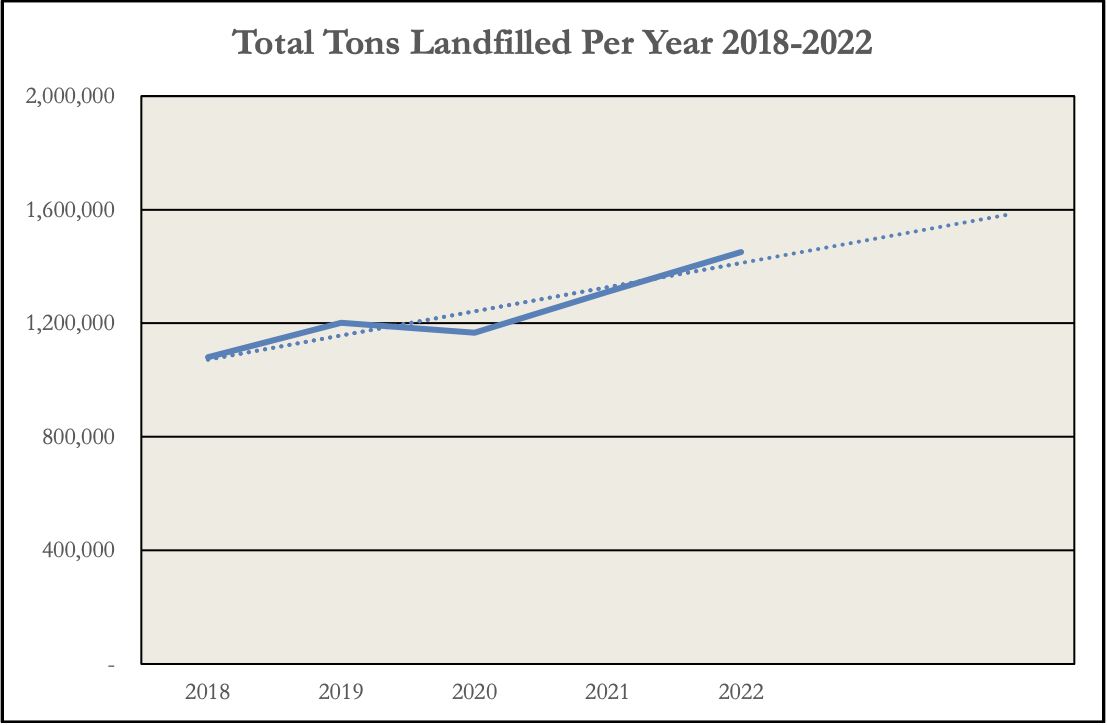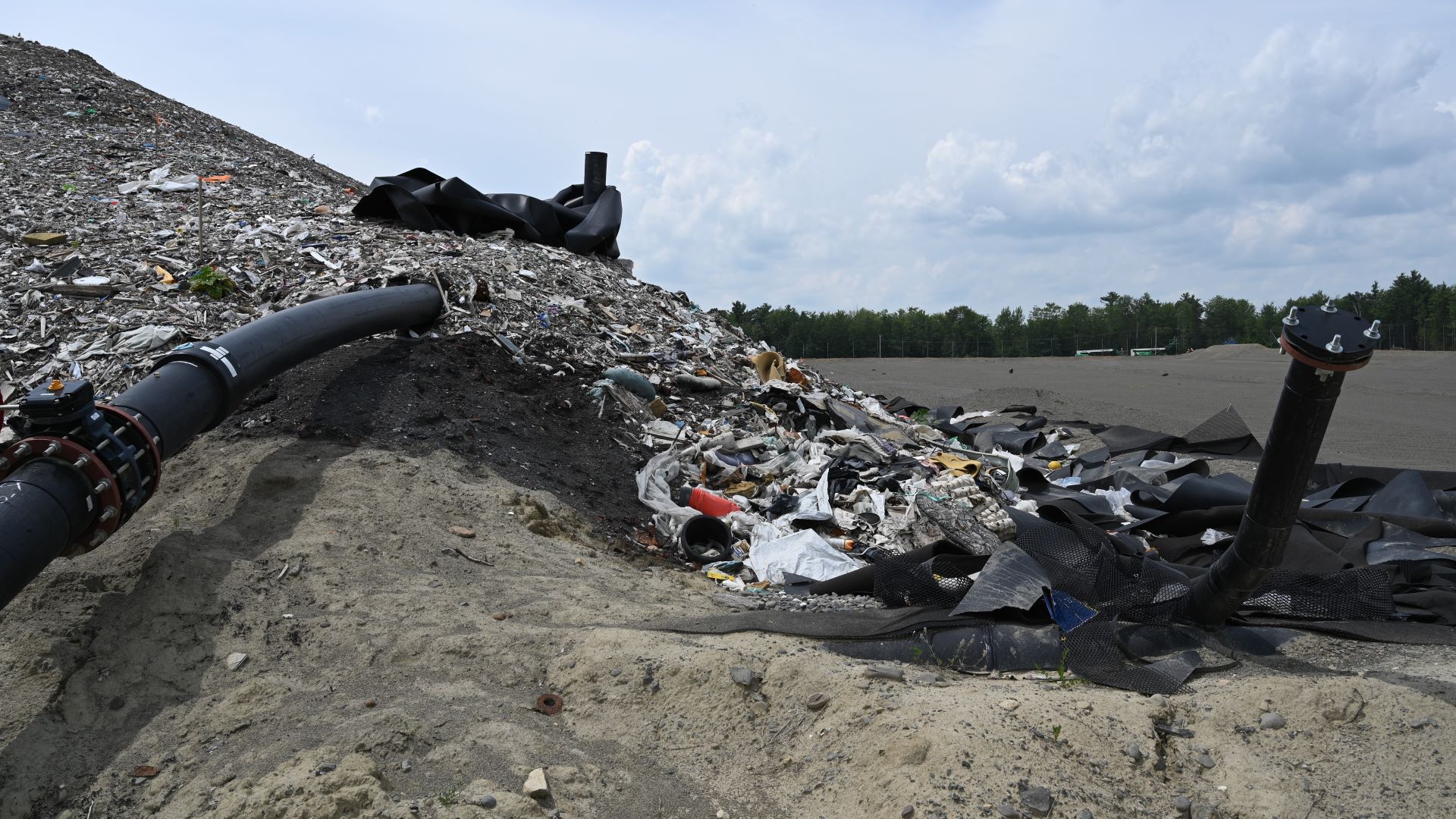Five years ago, the Bar Harbor town council voted 5-1 to stop recycling glass and asked residents to throw it in the trash instead. The reason? The constant crashing of glass into the bins was too noisy for neighbors of the transfer station, according to the Mount Desert Islander.
Councilors figured the glass would eventually be sorted out and recycled anyway at the new facility in Hampden, which was slated to open later that year.
But that never happened. The Hampden facility remains closed, and Bar Harbor’s glass — one of the world’s most readily recyclable materials — is being buried in the landfill at Juniper Ridge, 66 miles north.
Bar Harbor isn’t alone in throwing out something that could, in theory, be recycled. Between 2018 and 2022, the amount of municipal solid waste landfilled in Maine shot up 47 percent, from 388,629 tons in 2018 to 569,911 tons in 2022, according to a report released in early January by the Maine Department of Environmental Protection.
The total amount of waste going to Maine landfills (including sludge, construction demolition debris, bulky waste and municipal solid waste) increased by 34 percent.
“I’ll just come right out and say it: it’s easier to throw away trash than it is to recycle it,” Susanne Miller, director of the Bureau of Remediation and Waste Management at the Maine DEP, told lawmakers at a briefing Thursday.
There are more disposable products, fewer opportunities for recycling and more people in Maine than ever, Miller told the committee, and all are contributing to the increase. So are the sludge and sludge-derived products now being sent to landfills after laws banning spreading it on land went into effect. Debris from more intense storms will also add to the pile.
The amount of trash generated in the state is growing at a faster rate than the population, Miller said, while diversion rates — the amount of waste that’s recycled, composted or burned for energy — have remained stubbornly flat.
Maine has struggled to increase the diversion of waste from landfills for years with little success.
While it’s officially the least desirable option, landfilling is increasingly seen as the only choice by many local governments struggling with low recycling participation rates, and high hauling and disposal fees.
That’s partly because recycling is much more expensive, especially in rural areas: Bar Harbor pays Casella two and a half times more to dispose of recycling than trash — figures that don’t include hauling fees — said Suzanne Banis, office manager for the Bar Harbor Highway Division.
Other municipalities reported similar costs to DEP, which lists recycling fees as being 14 percent higher, on average, than fees for trash disposal, not including hauling, which can add hundreds of dollars per ton.
Those cost increases, which communities around the state have faced in recent years, coupled with the idling of the plant in Hampden (meant to take waste and recycling from more than 100 towns) and the idling of one of the Maine’s four waste-to-energy facilities last May have all contributed to more material being buried in landfills.

Another factor in the increase in landfilling of waste is sludge. In 2022, Maine became the first state to ban the spreading of sludge on farmland over concerns about PFAS contamination of soil.
The addition of sludge to landfills required, in turn, more bulky waste (like construction debris, ash and soil), which companies said was necessary to stabilize the wet waste. That added even more to the landfill disposal rates, according to the report.
It also resulted in lawmakers reluctantly reversing themselves — at least temporarily — on a recently enacted ban on out-of-state waste coming into Maine landfills. The compromise, reached last August, allows Casella to import 25,000 tons of out-of-state waste annually until 2025 to stabilize sludge at Juniper Ridge.
To manage the increase in sludge and other waste, DEP officials say Juniper Ridge must be expanded.
“Disposal capacity is running out, and we’re running out of time,” Miller told the Environment and Natural Resources Committee. “If the expansion does not occur, the state’s going to be in trouble. There’s going to be a crisis situation.”
Lawmakers questioned what the state could do to encourage companies to restart the idled waste-to-energy plant in Orrington, now named the Garbage Recycling and Clean Energy plant, or GRACE, or to increase capacity at the state’s landfills.
“So am I correct in assuming that you can’t approach any of these entities on behalf of the state and try to do anything to encourage them to get up and running or keep running or expand or any of those things?” asked Rep. Vicki Doudera, D-Camden.
“It would not be appropriate for the department who regulates that facility to also be encouraging them to expand,” Miller responded.

But in the meantime, the state is proposing to extend Casella’s contract to operate the landfill from 2034 to 2040. A public hearing will be held Jan. 25 on the agreement.
There are efforts to divert more materials from landfills, but they will likely take years to implement, said Miller, and will require the state to have a better understanding of what’s in Maine’s waste streams.
Several studies on waste streams are underway, one of which — on sludge and biosolids — was completed in December.
“We need to understand what our waste streams are in order to get the best return on investment,” said Miller. “We need to understand why we’re putting money towards one type of technology versus another or one type of program versus another.”
In recent years that’s been easier said than done. Despite a requirement that municipalities report to DEP every two years on their waste management and recycling practices, the department received fewer than 150 reports from Maine communities, as the Monitor reported in 2021, out of the nearly 500 that were notified.
And 15 years into what had been hailed as one of the nation’s best recycling programs for computers, phones and other electronic waste, officials still have little handle on what percentage of devices are winding up in landfills, where they can leach toxins.
Vanessa Berry, the sustainable Maine outreach coordinator with the Natural Resources Council of Maine, said she was pleased to see the report include strategies on reduction, reuse and right-to-repair.
“It’s very much like an overflowing bathtub,” said Berry of the increase in waste. “Recycling and landfilling and all of these other solutions are kind of cleaning up the mess of all. We really need to focus on turning off the tap.”
The department is also creating rules to govern the state’s first-in-the-nation extended producer responsibility for packaging program, which will require some producers to pay for packaging they introduce into the state.
The new program will use some of the funding collected from producers to reimburse municipalities for certain recycling and waste management costs. Officials hope it will eventually help communities expand or restart their recycling programs, but those changes are several years away.
There are also efforts to manage food waste, which makes up nearly 40 percent of the waste stream in the state, according to research from the University of Maine, including LD 1009, which aims to reduce food going to landfills in part by “rescuing” edible items and distributing them to food banks or other food distribution organizations, with the aim of increasing food rescue by 40 percent over the next year.
The solution, said Miller, will have to include all of the above.
“We’re going to have to expand landfill space. We’re going to have to ensure full operation of incineration and waste processing facilities like the ones that we have that are currently idled. We’re going to have to look at new technologies to see if there’s other ways to reduce volume and waste streams or prevent the need for landfilling. And we have to really work hard at implementing our waste reduction and diversion programs.”







